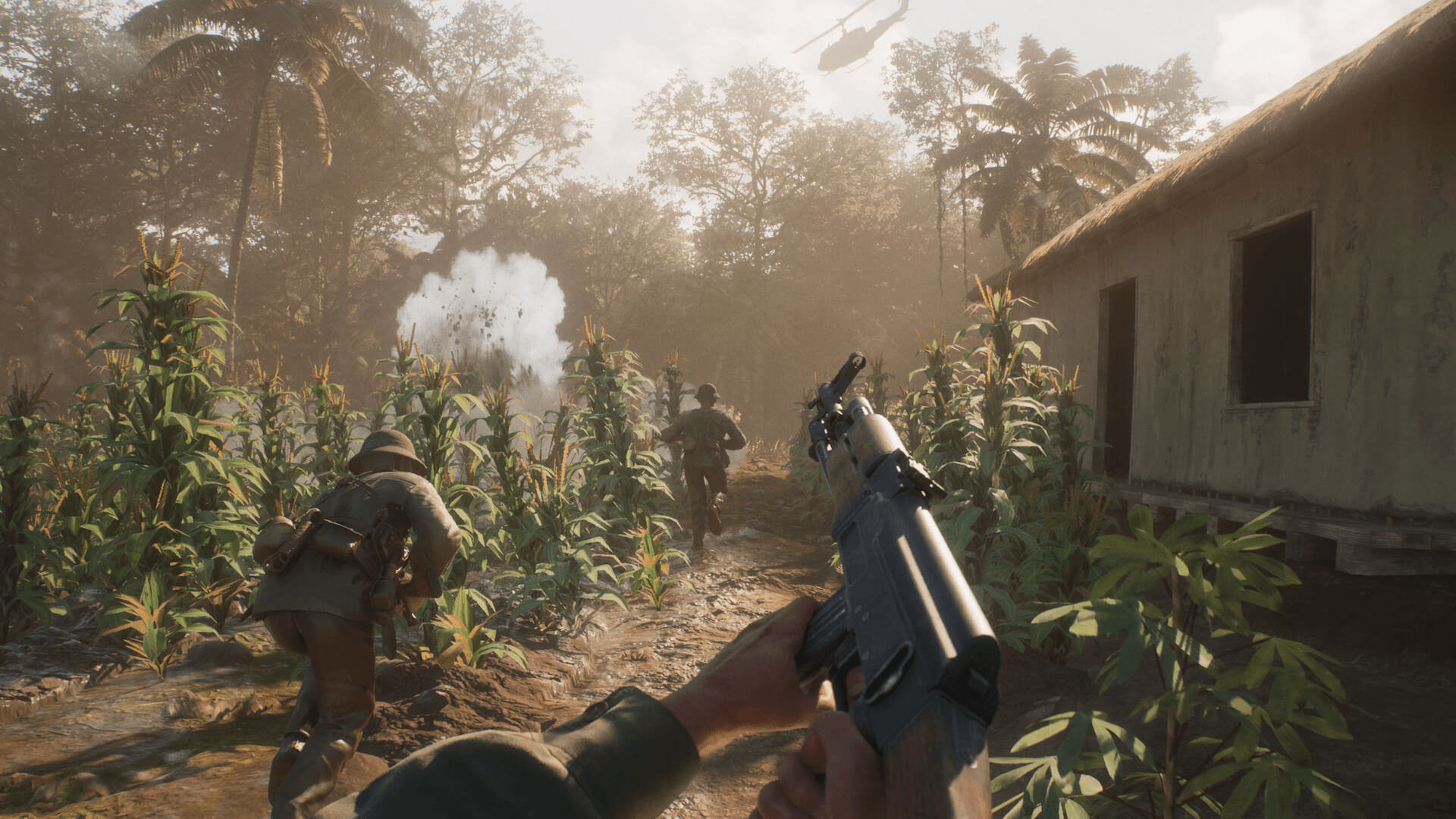Doncaster College
Commercial studio in an academic world, Doncaster as a leading example.
.svg)

.avif)
Doncaster College and University Centre, part of the DN Colleges Group, and in particular its VFX, 3D animation and games courses, have focused on one particular task in recent years: narrowing the gap between industry and education.
For far too long, graduates of these specialised programmes across the UK have graduated only to find that the industry they were focused on doesn't see them as a finished product. With too much emphasis, including at Doncaster College, on academic training rather than the practical skills demanded by employers, the colleges have had to raise their own performance. With the help of Escape Technology, the group is committed to doing something about it.
Doncaster University
"We were blown away when we saw Escape's proposal... From start to finish, the document simply put us at ease. It had everything you could want from a service provider. The solution they offered gave us such flexibility and meant we could deliver within budget."

The beginning of CGI history
The story begins two decades earlier: "I started in the industry in 1992," explains John Stopforth, Director of Curriculum for Creative Digital Technology at the DN Colleges Group. "I joined as an 18-year-old systems engineer, but I had never touched a computer in my life. I came in with little to no experience, but a huge amount of confidence and a positive attitude, and said, 'Yes, I can do that!' I started working primarily around Silicon Graphics, in the CAD market, with things like CATIA, Alias, Wavefront, and Sun Microsystems. Essentially, we provided hardware and software specifications and then brought the two together on-site, provided training, and then supported the client. Very similar, in fact, to Escape Technology's current model."
"It was a great time to enter this sector," John continues. "It was CG in its early stages. At that time, we were also selling into the education sector, and everyone was getting these Silicon Graphics computers and learning how to model with Power Animator. And the key thing was that these people in training were learning how to use these tools at exactly the same time as the people in industry."
Pay attention to the gap
This parity was not sustainable. As the costs of staying on top of this emerging creative discipline skyrocketed, a gap emerged between industry and education. Educational institutions simply did not have the resources to continuously invest at such a high level, causing the gap between the two to widen and persist for many years.
In the early to mid-2000s, John's career began to shift toward the creative side. He spent time at DNEG, working on projects for Eurocom, Revolution Software, and Sumo Digital. It was here that he noticed a recurring phenomenon: He was increasingly called upon for urgent assignments to improve the work of university graduates. "The guys coming out of university hadn't developed the ability to manage scene data. They were loose in the way they modeled, putting far too much into the geometry or texture banks. They didn't understand depth and didn't utilise the level of detail needed in logarithms to properly access the data sets."
What John and the entire industry now realized was that while students were being taught the principles and how to use the tools, they were unable to apply them in a professional data pipeline.
To change this, John came to Doncaster in 2007 as a part-time instructor, teaching Maya. With his industry background and understanding of workflow and pipeline, John soon saw his students become more successful and his courses grow. As a result, he became the program manager for the entire program.
"If ILM were to build a new studio, what would they need?"
Industry and education coordinated
Back in 2015, John was surprised to find himself in a meeting with the crème de la crème of the British VFX and post-production industry. This who's who of the industry acted as an advisory board and wanted to open new avenues into the industry for talented technicians. Their goal—to develop strong creatives who could work within, and, most importantly, understand, a professional pipeline and infrastructure—aligned perfectly with what John had championed.
Doncaster College invited this industry advisory group to participate in a tender process and potentially also help with funding for the initiative. The goal—to define the scope, specify, purchase, and install a professional studio within a studio at an educational institution—as John puts it: "If ILM were to set up a new studio, what would they need?"
The driving force behind this initiative was the Sheffield City Region's (SCR) Global Innovation Corridor (GIC) program, which John and the team in Doncaster applied for and successfully won. The SCR GIC program focuses on R&D assets and skilled specialties within the region to create a magnet for people and talent, industry and innovators. The SCR GIC recognised that the region needed a recognised centre of excellence to create and retain digital talent in the region, one that could compete with the talent outflow from London. Doncaster already had a deficit when it came to filling vacant digital roles, and this initiative would give local talent the opportunity to develop all the skills the region needs for the future.
Escape worked closely with the college's Industry Advisory Board to initially define some generic layouts that were largely within budget. John used these to design four courses that could be successfully delivered. This building layout and the four courses became the core of what is now known as VFX Academy/The Studios.
As part of this process, the Lightforge Academy was established in Doncaster. Lightforge collaborates with industry partners to respond to current needs and runs short courses (often live projects) to match students' talents to these new needs—essentially an industry finishing school. On a campus where interaction with industry is now the norm, this is another asset for Doncaster College.
.jpg)
The Escape Solution at Doncaster College
Escape Technology was one of the companies that responded to the tender. "We were overwhelmed when we saw Escape's proposal," says John. "From start to finish, the document simply won us over. It had everything you could want from a service provider. The solution they offered us gave us such flexibility and meant we could deliver on budget."
In accordance with the requirements, the solution itself was very closely based on a commercial system.
Escape had to design and install a new 100 Gb Mellanox network backbone for the system, with multiple 10, 25, or 40 Gb connections as needed. This provided significant bandwidth for the Pixstor storage solution, designed as a deep vault and capable of handling the 4K work produced by the students.
The studios consist of five classrooms, each with 15 seats. Each workstation had to be a powerful all-rounder, so they specified HP Z4s with RTX 2070 SUPER processors running on 24 Gen 10 i9x cores. "They're super fast," confirms John. "We used to get complaints from learners that they couldn't open Unreal Engine files, large-format Adobe Premiere projects, Maya scenes, or ZBrush scenes, let alone Substance Painter and Designer; all that disappeared the moment they started using these Z4s."
John also introduced gaming chairs, curved desks, and floating monitors (including at least one pure-colour monitor per classroom) so that the classrooms would feel and function like a commercial studio.
An on-premises render farm was chosen over cloud-based rendering, firstly because it is much easier to budget for, and secondly because sudden rendering due to deadlines is rarely required in the educational sector. Doncaster College's render farm comprises 1,600 physical cores and is the largest Escape Technology has ever delivered to an educational client.
Throughout the project at Doncaster College, the Escape team worked from start to finish to realise this vision. At every stage, Escape's specialist engineers were on hand, either in person or remotely, to ensure that the solution was not only designed to fully meet the specifications, but also delivered on its promises in practice.
The team transformed the existing space into a commercial-standard VFX and games studio, from initial loose layouts and small details like discrete cabling to complex complete storage, networking, and desktop installations. Doncaster College and the region as a whole have become a hotbed for digital talent. And with an ongoing support contract that means our experts are always just a phone call or a short train ride away, the college and its students can also rest assured that all their technology is operating at its full potential at all times.
The circle closes
Because Doncaster College is much easier to reach than one might imagine (it is only an hour and a half from King's Cross in London), the college has a strong case for attracting students from the capital for its Level 3, 4, 5, and 6 courses, rather than losing them to the capital.
The talents of the teaching staff can also play a more important role now that the college so closely reflects the industry, John adds: "Now, when I talk to people like Framestore, BlueZoo Animation, or Axis Studios, they immediately understand what we have to offer, and that has made it easy to host masterclasses with them. Their pipeline aligns with ours, so they can easily talk about the way they do things."
"I was so impressed that the Escape team came to the site with such minimal effort. They gave us a build timeline and actually delivered within that timeline. We shut down the studio for two weeks and were back up and running by the third week. It was amazing."
One of the few positive aspects of the pandemic, John says, is our willingness and ability to embrace video calls and remote working. Masterclasses can be conducted without requiring industry representatives to be present live in the classroom, allowing for much greater input from a larger number of industry professionals than ever before. This speaks once again to the high level of interaction between industry and education that Doncaster facilitates.
Since this is one of Escape's largest educational projects to date, and a large portion of the installation was carried out during the studio's closure period, most of which fell within the planned summer break, both teams worked closely together to complete the project. John had one final comment: "I was so impressed that the Escape team came to the site with such minimal effort. They gave us a build timeline and actually delivered within that timeline. We shut down the studio for two weeks and were back up and running by the third week. It was brilliant."
.jpg)
We'd love to hear from you, why not speak to us today...
Whether you're a small studio or a global company we can help you.




.png)


%20copy.avif)



.avif)